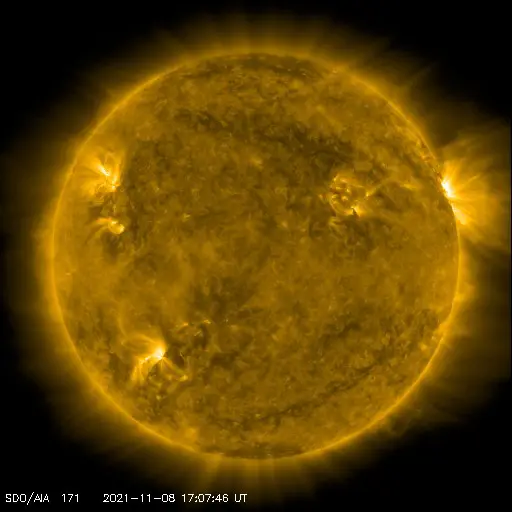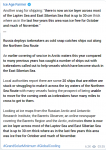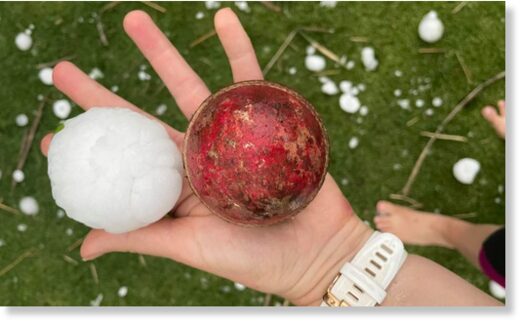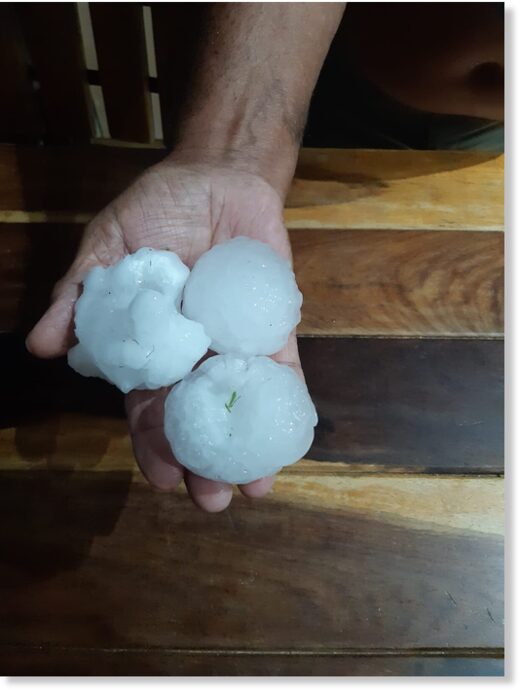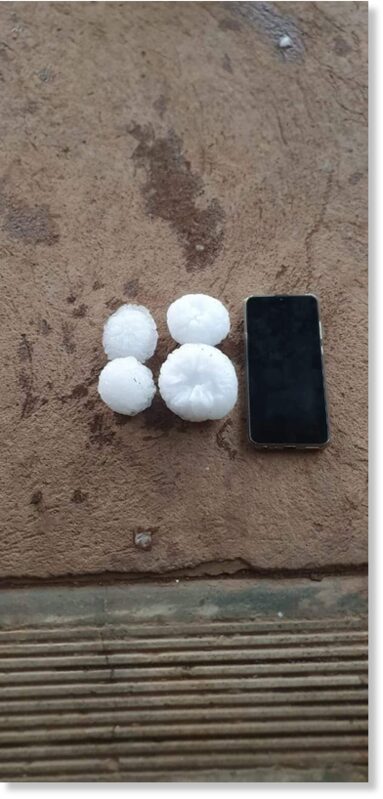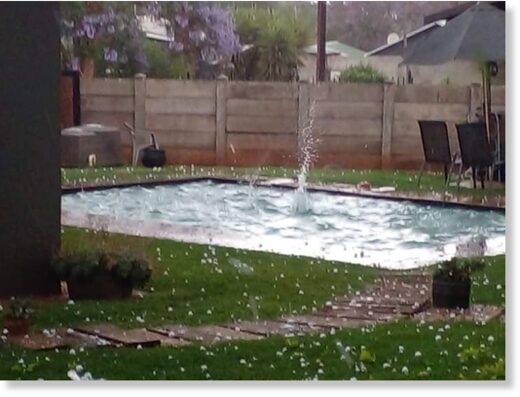Punishing Cold Breaks 167-Year-Old Records In Australia, + An Early Arctic Freeze Traps 20+ Ships In Unusually Thick Sea Ice - Electroverse
Extreme Weather GSM
PUNISHING COLD BREAKS 167-YEAR-OLD RECORDS IN AUSTRALIA, + AN EARLY ARCTIC FREEZE TRAPS 20+ SHIPS IN UNUSUALLY THICK SEA ICE
NOVEMBER 15, 2021 CAP ALLON
Thank you for all the kind messages re my road trip back to the UK from Portugal.
Regarding the actual journey: I don’t want to talk about it. Ha. France has lost the plot: 1) On stopping for food we were told we weren’t allowed to eat unless we were fully vaccinated–so we went hungry, and 2) at the ferry port, my answer of ‘not declared’ when asked by the
cheese-eating surrender monkeys on passport control if I was vaccinated –a valid option on the UK’s ‘entry/locator form’– got us parked up in the ‘naughty corner’ where we were left to ponder why we hadn’t just given in and accepted an experimental drug for a virus that statistically won’t impact us.
We were
finally allowed onto the ferry after showing negative PCR tests (which is something I attempted to do off the bat), but not before being told that France would prefer it if we didn’t return anytime soon–I think because the UK is on their ‘amber list’ (a political move). And this is fine by me. We’ll catch the ferry direct to Spain on the return leg. Because although sailing the Bay of Biscay is a choppy, vomit-inducing nightmare, it’s preferable than having to deal with the insanity going on in France right now.
PUNISHING COLD BREAKS 167-YEAR-OLD RECORDS ACROSS AUSTRALIA
The seasons have gone “topsy-turvy” down under as a blistering Polar front sweeps the vast majority of Australia, just two weeks out from summer.
Much of the continent is suffering punishing temperate departures of 8-18C below the seasonal norm:

GFS 2m Temperature Departures (C) for Nov 14 [
tropicaltidbits.com].
The exceptional chill is taking down long-standing records across the country.
The Tasmanian capital of Hobart, for example, just shivered through its chilliest November low in 60 years. The mercury in the city sank to 2.9C (37.2F) at dawn on Monday — the coldest November night since 1953 (solar minimum of cycle 18). And Kunanyi/Mt Wellington, which overlooks Hobart, bottomed out at -5.8C at 4.30am — the third coldest November temperature ever recorded in Tasmania.
Melbourne recently logged its coldest November day since 2007 (solar minimum of cycle 24), with that reading (of 14C/57.2F) surpassed on Monday when a high of just 13.5C/56.3F was observed.
Most impressively though, some locales have just endured a late-season cold spell not seen for more than 160 years.
As reported by
weatherzone.com.au, Melbourne’s maximum temperatures during the last four days have held well-below the long-term November average of 22C (71.6C), reaching 14C/57.2F on Friday, 14.6C/58.3F on Saturday, 15.3C/59.4F on Sunday, and, as mentioned above, 13.5C/56.3F on Monday.
This is the first time in 167 years of records that Melbourne has had four days below 15.5C (59.9F) this late in spring.
While further north, Canberra’s last three days have held around 10C below the seasonal average — the first time in 99 years of record-keeping that Australia’s capital city has suffered three days at or below 14C/57.2F this late in spring.
View: https://twitter.com/weatherzone/status/1460147807357050882
“The winter chill is here … two weeks out from summer,” said Sky News Weather meteorologist Alison Osborne, who dubbed the event “snowvember”. The late-season snow has indeed been exceptional, with heavy flurries accumulating not only on Tasmania’s peaks but down at sea level, too.
And it’s not done yet, added Osborne: “The cold front itself is moving out to sea; however, cool south-westerly winds in its wake will maintain showers, snow, and also make for another chilly day for many elsewhere around the country.”
View: https://twitter.com/Bergeonline/status/1459805053284282373
Bureau of Meteorology forecaster Miriam Bradbury said the Antarctic front would continue to impact the state of Victoria on Monday and Tuesday “because that very cold air mass that’s associated with the front is still sort of streaming across the state”.
Victoria’s snow level dropped down to below 1000m (3280ft) early on Monday.
“It has been abnormally cold,” admitted the BOM’s Bradbury. “We will continue to see pretty wintry conditions. Maximum temperatures today (Monday) aren’t expected to be very high, generally 8-12C below the November average.”
AN EARLY ARCTIC FREEZE TRAPS 20+ SHIPS IN UNUSUALLY THICK SEA ICE
More than 20 vessels are either stuck or struggling to make it through increasingly thick sea-ice on the Northern Sea Route.
In recent years, ships traversing Russia’s northern coast have had a relatively easy time of it in late-Oct/early-Nov — but
trends change, and this year, as our planet continues its descent into its next bout of global cooling, the ice is re-freezing
early and
quickly.
Large parts of the remote Arctic waters were covered in thick sea-ice by late October, reports
thebarentsobserver.com: “and the white sheet is quickly getting thicker and harder to navigate,” continues the article.
Ice maps show that major parts of the Laptev Sea and the East Siberian Sea are already covered by ice more than 6 inches thick. While over the East Siberian Sea, there are vast areas with 28 inches thick
one-year ice, as well as 80 inches thick
multi-year ice.

Sea-ice on the Northern Sea Route, Oct 31 – Nov 2 [aari.ru]
Among the ships located on the eastern part of the route are two oil tankers and a significant number of bulk carriers, including three ships bringing iron ore from the Canadian Milne Island to China, and two carrying iron ore from Murmansk.
Several other ships have made course changes in order to attempt to circumvent areas with the fastest advancing ice.
Dutch heavy lift vessel
Poolgracht, for example, is transporting cargo for Novatek’s natural gas project ‘Arctic LNG 2’ and had to wait for an icebreaker near the Vilkitsky Strait. The vessel is now sailing westwards in a convoy escorted by nuclear icebreaker
Taymyr. In that same convoy are the
UHL Flash and
UHL Faith.

Stuck ship, November 13 [
energyglobalnews.com].
For a full break down of the ships in trouble –including two sailing from China that have spent the past two weeks “zig-zagging’ their way through the unusually thick sea ice– check out the
thebarentsobserver.com article in full.

[
thebarentsobserver.com]
Furthermore, the majority of the vessels don’t have permission to sail in thick sea ice without icebreaker assistance, and they will end up violating Russian shipping regulations if they can’t leave the region soon. At least one ship has already exceeded its time limit on the route — the
Andrei Pervozvanny, an oil tanker, only had permission to sail in the area until Nov 9.
The adverse conditions are also concerning for Russian authorities who are promoting the Northern Sea Route as a future alternative to the Suez Canal. This, for obvious reasons, is a non-starter.
The
COLD TIMES are returning, the mid-latitudes are
REFREEZING, in line with
the great conjunction,
historically low solar activity,
cloud-nucleating Cosmic Rays, and a
meridional jet stream flow (among other forcings).
Both NOAA and NASA appear to agree,
if you read between the lines, with NOAA saying we’re entering a
‘full-blown’ Grand Solar Minimum in the late-2020s, and NASA seeing this upcoming solar cycle
(25) as “
the weakest of the past 200 years”, with the agency correlating previous solar shutdowns to prolonged periods of global cooling
here.
Furthermore, we can’t ignore the slew of new scientific papers stating the immense impact
The Beaufort Gyre could have on the Gulf Stream, and therefore the climate overall.

 Prepare accordingly
Prepare accordingly—
learn the facts, relocate if need be, and grow your own.








